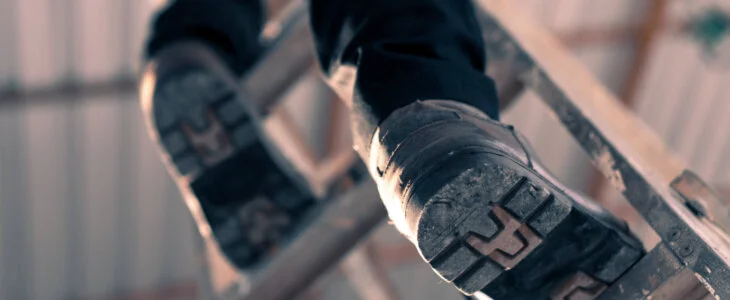Ladders, an indispensable tool in many industries, are often underestimated in terms of the risks they pose. Effective ladder training is crucial for safety purposes, especially for construction workers, firefighters, and home remodeling enthusiasts. It’s not just about ascending and descending; it’s about knowing how to inspect a ladder, set it up correctly, and maintain balance while using it.
Ladder training also encompasses the types of ladders, their appropriate uses, and the safety protocols associated with them. Workplaces and homes should foster a culture of safety where ladder training is seen as essential and not just a formality. We want everyone to see this blog as an open discussion about ladder safety!
The First Rung: Ladder Safety
When embarking on ladder training, the initial focus is on ingraining fundamental safety practices. The first step is a thorough inspection of the ladder. This process involves checking for any signs of damage, such as cracks or bent rungs, which could compromise its stability. Beginners are taught to look for issues like loose screws or corrosion, which can lead to catastrophic failures.
The next crucial aspect is the proper setup of the ladder. This involves ensuring that the ladder is placed on a firm, level surface and is fully extended or opened correctly. For extension ladders, it’s vital to ensure that the angle of the ladder is appropriate – not too steep or too shallow. Trainees learn about the “1-in-4” rule, where the base of the ladder should be one foot away from the surface it leans against for every four feet of height.
READ MORE: 7 Tips To Prevent Ladder Accidents At Home
Finally, safe climbing techniques form the cornerstone of ladder safety. This includes maintaining three points of contact with the ladder at all times – two hands and one foot, or two feet and one hand. This practice significantly reduces the risk of falls and injuries. Trainees are also taught to face the ladder while climbing, move slowly and deliberately, and never to carry heavy loads that might throw off their balance.
Advanced Ladder Training Techniques
As trainees become more comfortable with the basics, ladder training progresses to more advanced safety techniques. Height awareness is a critical aspect, as working at different heights presents unique challenges. Trainees learn to assess the risk associated with various tasks, understanding that higher doesn’t always mean more dangerous – even falls from relatively low heights can be severe. They are taught how to set up and use safety equipment like harnesses and fall arrest systems in high-risk situations.
Emergency procedures are another crucial element of advanced ladder training. Trainees are educated on what to do if they find themselves in a dangerous situation on a ladder. This includes how to safely descend in case of sudden health issues, such as dizziness or a panic attack, and how to call for help while maintaining a safe position on the ladder. Simulated emergency drills are often conducted to ensure that trainees can react calmly and effectively in real-life scenarios.
Lastly, weather considerations play a significant role in ladder safety. Outdoor ladder use often exposes workers to elements like wind, rain, or even ice, which can greatly increase the risk of accidents. In advanced training, emphasis on understanding how to assess weather conditions, the importance of using weather-resistant ladders, and techniques for stabilizing ladders in adverse conditions is important.
Last Thoughts
Ladder training is a critical component of workplace and home safety. It empowers seasoned professionals and beginners with the knowledge and skills to safely use ladders. The more these practices are implemented, the more we can reduce the number of ladder-related accidents. But when it does happen, you need someone fighting for fair compensation.
Despite all precautions, accidents can still happen. In such unfortunate events, having a reliable personal injury attorney you can call is crucial. Deldar Legal is available 24/7 at (844)335-3271 or you can visit our website and fill out an online contact form. We always have an experienced attorney on standby who can evaluate your case and offer their legal expertise.


